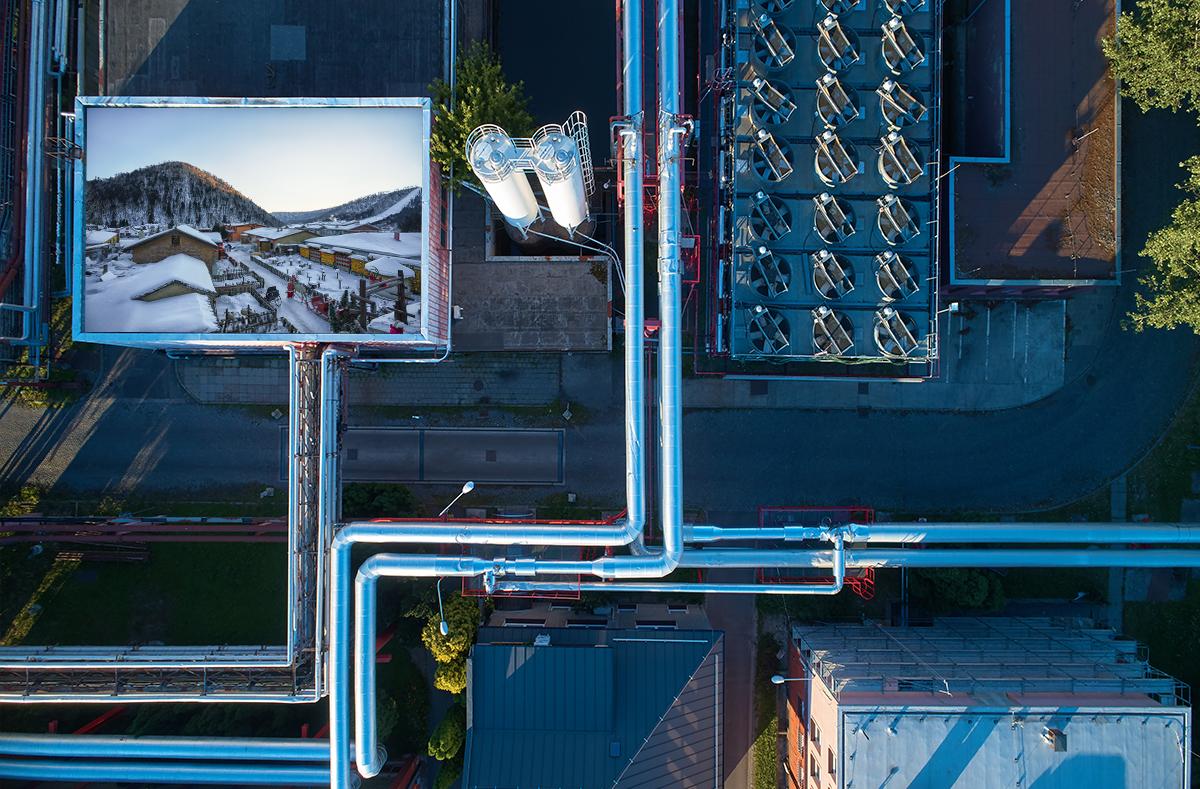The year 2060. Imagine you’re at home on a cold winter’s day in Beijing. Buildings are smart and super-efficient with minimum energy needs. Heating in commercial and residential buildings is sourced from a variety of renewable energy solutions (via electricity or heat). Industries use both green electricity complemented with hydrogen and any waste heat feeds into the local district heating system. Science fiction, or a possible energy transformation result of China’s pledge to become carbon neutral by 2060?
Regardless of the vision you might have of a future zero-carbon world, in countries with high heating needs, district heating solutions will continue to play a central role in delivering high-efficiency, affordable, clean and reliable heating to all.1 District heating systems or networks are typically located in urban areas and help distribute heat for domestic hot water, space heating in buildings and/or providing heat to and from industrial processes.
These systems are fuel-agnostic, yet most run on fossil fuels today. The International Energy Agency (IEA) states that about six percent of global heat consumption was supplied through district heating networks in 2018, with Russia and China contributing more than a third of the total. Fossil fuels are by far the main energy source driven by natural gas in Russia and coal in China. Comparatively, renewables only account less than eight percent of energy used in district heating systems, predominantly through bioenergy.2 If we look at only the building sector, heat production for space heating and hot water accounted for about 4.3 gigatons of CO2 emissions in 2019—approximately 12 percent of global energy and process-related CO2 emissions.3 A greater investment in energy efficient buildings and use of renewable energy in heating is therefore needed to reach our climate goals under the Paris Agreement.
But there is hope. Renewable energy-based district heating systems are on the rise and renewable energy consumption for district heating and cooling systems are expected to increase by 40 percent worldwide, with China representing about 80 percent of this increase.4 Most of the Northern European countries are already transitioning to a new era of high-efficiency district heating systems fueled by biomass, solar, geothermal, other renewables, waste heat (e.g., data centers, waste incineration) or even green hydrogen. Denmark is targeting an energy system based on 100-percent renewable energy by 2050. Cities like Stockholm in Sweden have committed to become fossil-free by 2040. In Norway, most of the heat is already provided through electric boilers and heat pumps powered by hydropower. A similar approach is now followed by the city of Shangri-la, China.
China is going one step further by investing in state-of-the-art efficient technologies, making use of lower temperature systems (<100⁰C) and integrating solar heat, geothermal heat and excess waste heat from industries. This presents a huge opportunity as accessible low-grade excess heat from industries in China could supply 55 percent of the entire heating demand in Northern China.5 Automatically controlled prefabricated substations, pre-insulated pipes and highly efficient boilers are widely used in China today. In the city of Sanmenxia, China, system optimization tools based on sophisticated machine learning algorithms are applied and are expected to be adopted in many other district heating systems across the country.
Such new and proven technologies are much needed in Russia and Central Asian countries, which have high heating needs and well-established district heating systems in dire need of an efficiency upgrade. In many cases, district heating systems in these countries suffer from high operating costs, poor cost-recovery, high dependency on government subsidies and poor metering and control systems. It will be important to ensure greater collaboration and sharing of regional experiences between Europe, Russia, China and other Asian countries.
Overall, the investment needs for district heating systems in Asia is surmountable. The Asian Infrastructure Investment Bank (AIIB) conducted a study to evaluate opportunities in building and upgrading gas/renewable energy-based district heating systems in selected AIIB members. The study identified at least USD3-4 billion worth of district heating projects today in Belarus, China, Kazakhstan, Russia, Türkiye and Uzbekistan. This merely skims the surface of a sea of opportunities.
As part of AIIB’s Corporate Strategy: Financing Infrastructure for Tomorrow, AIIB is reaching out to governments and the private sector to help them invest in the next generation of green and smart district heating systems. AIIB is keen to support countries in their transition to high efficiency and cleaner energy resources from gas to renewables and, if viable, green hydrogen.
We eagerly await that cold winter day in Beijing in 2060 when vision becomes reality.
Sources:
BNEF, 2019. District Heating: Old Technology, New Potential.
IEA, 2017. District Energy Systems in China.
IEA, 2019. How can district heating help decarbonise the heat sector by 2024?
IEA, 2020. Is cooling the future of heating?
IRENA, 2017. Renewable energy in district heating and cooling: A sector roadmap for Remap
RMI, 2020. Combating Climate Change through High-Performance Districts
1 RMI. 2020. Combating Climate Change through High-Performance Districts. https://rmi.org/combating-climate-change-through-high-performance-districts/.
2 IEA. 2019. How can district heating help decarbonise the heat sector by 2024? https://www.iea.org/articles/how-can-district-heating-help-decarbonise-the-heat-sector-by-2024.
3 IEA. 2020. Is cooling the future of heating? https://www.iea.org/commentaries/is-cooling-the-future-of-heating.
4 IEA. 2019. How can district heating help decarbonise the heat sector by 2024? https://www.iea.org/articles/how-can-district-heating-help-decarbonise-the-heat-sector-by-2024.
5 IEA. 2017. District Energy Systems in China. https://www.iea.org/reports/district-energy-systems-in-china.
6 EBRD. 2017. Policy Paper on Infrastructure. Making District Heating Happen: Pathways to Financial Sustainability. https://www.ebrd.com/documents/admin/policy-paper-on-infrastructure-making-district-heating-happen-pathways-to-financial-sustainability.pdf.


